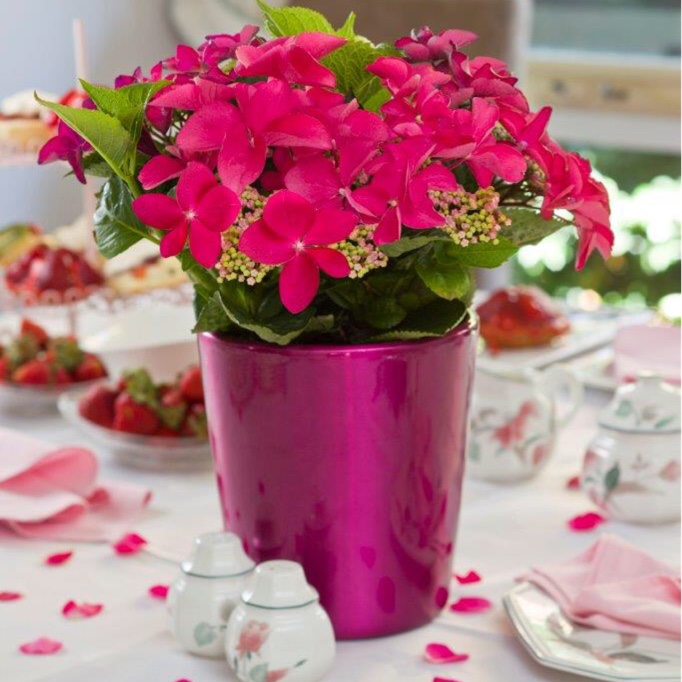
Hydrangea paniculata 'Strawberries and Cream'
Hydrangea Strawberries and Cream
'Strawberries and Cream' produces creamy white blooms which turn pink with maturity. The stems of this plant are red in colour adding interest. Flowering from early summer, 'Strawberries and Cream' can be grown in pots and containers as well as in the flower border.
Contributed by @tesselaarplants
-
Full sun to partial shade
-
Occasional watering
-
Full Frost Hardy: 5F (-15°C)
-
Moist and rich
Common name
Hydrangea Strawberries and Cream
Latin name
Hydrangea paniculata 'Strawberries and Cream'
type
Flowering Shrub
family
Hydrangeaceae
ph
5.0 - 8.0 Acid - Neutral
Plant & bloom calendar
-
Best time to plant
-
When the plant will bloom
full grown dimensions
 1.00 M
1.40 M
1.00 M
1.40 M
Hydrangea paniculata 'Strawberries and Cream'
'Strawberries and Cream' produces creamy white blooms which turn pink with maturity. The stems of this plant are red in colour adding interest. Flowering from early summer, 'Strawberries and Cream' can be grown in pots and containers as well as in the flower border.
Flowering season
From Early Summer TO Early Autumn
Flowers open from the base of the spike from early-summer to early autumn
Planting young plants
From Late Autumn TO Early Spring
Plant Hydrangeas in autumn or in early spring in good loamy soil that is moisture retentive and previously enriched with well decayed manure, compost or peat. They are best grown in a sheltered position against a wall or hedge or beneath a canopy of high trees. The tender young shoots are easily damaged by late spring frosts thus they should not be grown in positions where early morning sun after night frost may damage them.
Flowering Season
From Mid Summer TO Late Autumn
Hydrangeas will flower from mid-summer, often through to late autumn. Some varieties bloom earlier, particularly H. petiolaris. The flowers are born on the previous year's growth.
Propagation by layering
From Late Spring TO Mid Summer
Propagation can be done by layering. Choose soft pliable stems that will reach the ground and allow the end of the shoot to be about a 1ft above the ground. On either side of a leaf joint, carefully slice the bark along it before securing it into the ground with wire hooks, or similar, each side of the slice. a hormone rooting powder can be used to help with the rooting. Tie the end of the shoot up carefully so that it grows vertically.
Propagating by cuttings
From Early Summer TO Mid Summer
Semi hard wood cuttings are taken from the current years growth from late summer to mid autumn the bottom of the cuttings is hard and soft on the top. With a sharp knife take a cutting of about 14 cms, remove lowest leaves, dip end into rooting hormone, and place round the edge of a pot filled with a suitable compost, water well, they must remain moist till rooted, place under glass but in semi shade.








